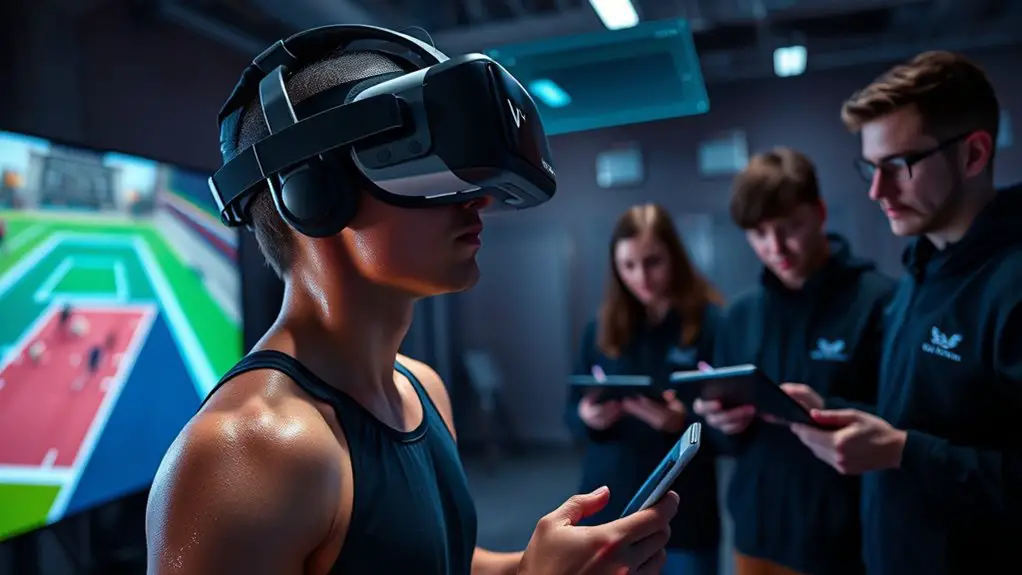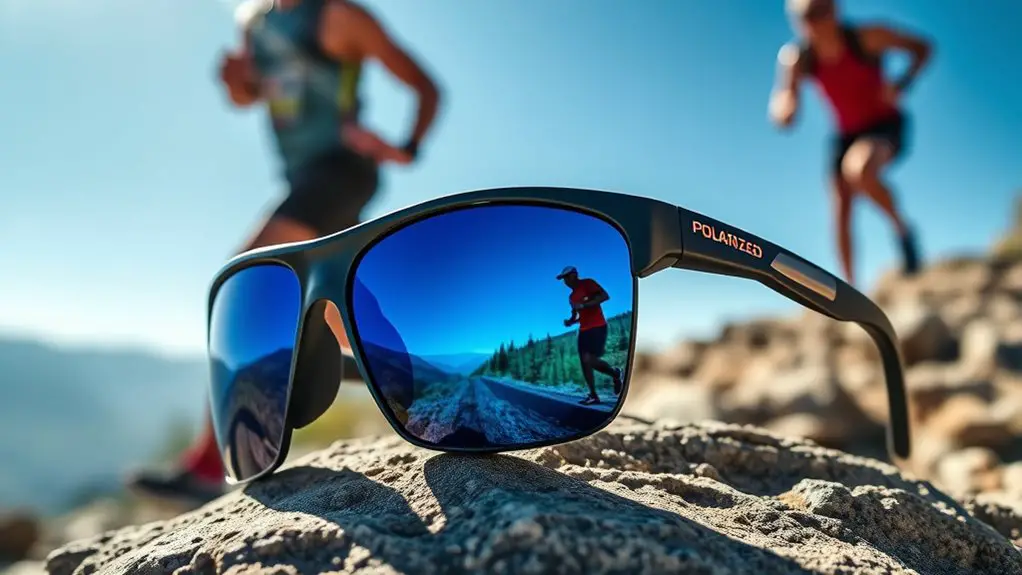VR is transforming sports training by enhancing your decision-making skills, improving your technique, and simulating game scenarios. You can practice without physical risks, refining your moves and strategies in a controlled environment. Real-time feedback helps you analyze performance, making quick adjustments to your technique. Plus, it builds your mental resilience and focus under pressure. If you're curious about how athletes are leveraging these benefits to elevate their game, there's much more to discover.
Enhancing Decision-Making Skills in Contact Sports
As athletes face split-second decisions during high-pressure situations, virtual reality (VR) training can significantly enhance decision-making skills in contact sports. You can immerse yourself in realistic scenarios, simulating game situations without the physical risks. This environment allows you to practice your instincts and reactions, sharpening your ability to analyze plays and make quick choices. By repeatedly engaging with these virtual scenarios, you'll gain confidence in your decision-making, translating that newfound freedom into real games. Plus, you can explore various strategies and outcomes, helping you understand the consequences of your choices better. Ultimately, VR offers a unique opportunity to enhance your mental agility, empowering you to take control of the game like never before. Embrace this technology and redefine your performance!
Improving Technique and Form for Individual Athletes
Building on the mental agility gained from VR decision-making training, individual athletes can also markedly improve their technique and form through virtual reality. By immersing yourself in a virtual environment, you can focus on refining your movements without the distractions of the real world. This freedom allows you to:
- Perfect your swing or stroke with immediate feedback, enhancing your confidence.
- Visualize your performance in various scenarios, empowering you to overcome mental blocks.
- Experiment with different techniques safely, releasing your creativity and finding what truly works for you.
With VR, you're not just training; you're discovering your potential. Embrace this innovative tool and feel the thrill of mastering your craft like never before.
Simulating Game Scenarios for Team Strategy Development
When teams immerse themselves in virtual reality, they can effectively simulate game scenarios that enhance strategic development. By replicating real-game situations, you can explore tactics and make quick decisions without the pressure of a live match. This freedom allows for experimentation, helping teams discover new plays and strategies.
Here's a quick overview of how VR can be used for strategy simulation:
| Scenario Type | Benefits | Example Usage |
|---|---|---|
| Offensive Plays | Develops creativity | Testing new formations |
| Defensive Strategies | Enhances teamwork | Coordinating player movements |
| Game Situations | Improves decision-making | Practicing last-minute plays |
| Adapting to Opponents | Builds adaptability | Responding to rival tactics |
With VR, teams can unleash their potential and refine their game strategy in a safe environment.
Analyzing Performance Through Data and Feedback
While players engage in VR training, they also receive valuable data and feedback that can greatly enhance their performance. This real-time analysis helps you understand your strengths and weaknesses, allowing for a tailored approach to improvement. You're not just practicing; you're evolving.
- Instant insights empower you to make quick adjustments and optimize your technique.
- Visual feedback lets you see your movements, helping you make corrections that feel natural.
- Performance tracking motivates you to push boundaries and achieve personal bests.
With this data in hand, you can embrace your freedom on the field, knowing you're equipped to elevate your game. It's all about revealing your true potential and enjoying the journey of growth.
Building Mental Resilience and Focus in High-Pressure Situations
As athletes navigate high-pressure situations, the ability to maintain mental resilience and focus becomes essential. Virtual reality (VR) offers a unique way to train your mind for these challenges. By immersing yourself in simulated high-stakes environments, you can practice staying calm and centered, even when the pressure's on.
Imagine facing a roaring crowd or a critical game moment without the physical consequences. This freedom lets you explore different strategies, build confidence, and improve your decision-making under stress.
The more you expose yourself to these scenarios, the more resilient you'll become. You'll learn to recognize and manage anxiety, sharpen your focus, and ultimately enhance your performance. Embracing VR in training can empower you to thrive when it matters most.
Frequently Asked Questions
What Sports Are Currently Using VR for Training?
You'll find VR being used in various sports, like football, basketball, and tennis. Athletes use it to enhance skills, practice strategies, and improve decision-making, giving them an edge while embracing the freedom to train creatively.
How Much Does VR Sports Training Equipment Cost?
You might think VR sports training equipment is out of reach, but prices vary widely. Some setups start around a few hundred dollars, while high-end systems can cost thousands. Your freedom to train smarter is worth it!
Can VR Training Be Used for Injury Rehabilitation?
Absolutely, you can use VR training for injury rehabilitation. It offers immersive environments that aid in recovery, allowing you to practice movements safely while monitoring progress, ultimately enhancing your rehabilitation experience and helping you regain strength.
What Age Groups Can Benefit From VR Sports Training?
You'd be surprised how many age groups can benefit from VR sports training! Kids, teens, adults, and seniors all find value, as it enhances skills, boosts confidence, and promotes a fun, engaging way to stay active.
Are There Any Risks Associated With VR Training?
Yes, there are risks with VR training. You might experience motion sickness, eye strain, or disorientation. It's crucial to take breaks, stay aware of your surroundings, and gradually adjust to avoid potential issues.




